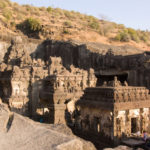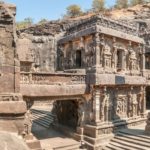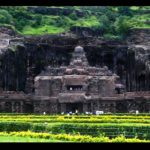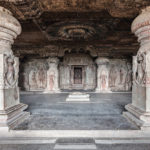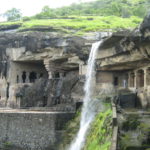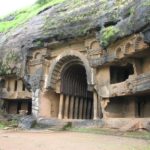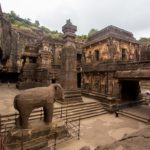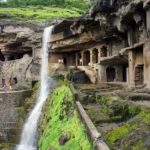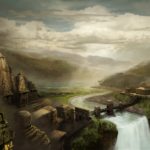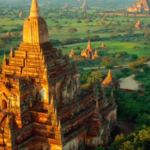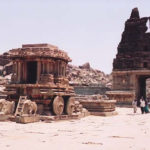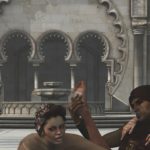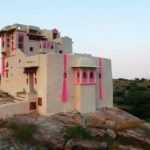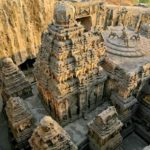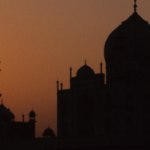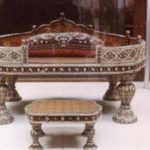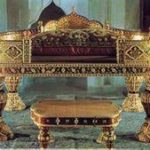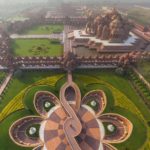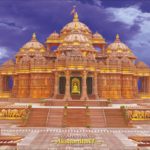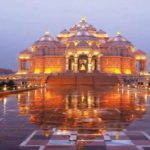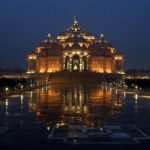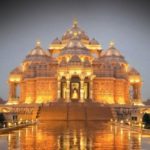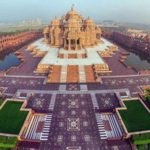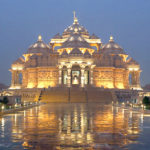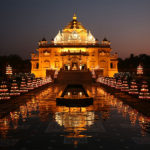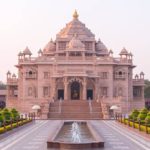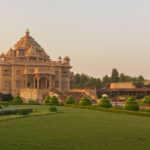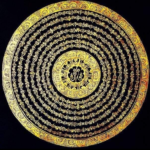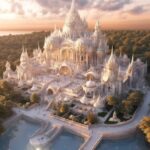This temple is used predominantly for meditation and silent practice of the Kama Sutra.
–
Table of Contents:
- Introduction
- Dimensions & Layout
- Special Features
- Appearance Concepts (Images Begin)
- 2021 Update: Swaminarayan Akshardham
- 2022 Additions
- 2023/+
–
Introduction:
Although T&A has an Indian (India) architectural influence, it is also largely influenced by Chinese and Italian architecture. The temple dedicated entirely to the Indian ‘look and feel’ is located amidst the topography near the top of the mountain range called Dragon’s-back. This temple was built to look like the only still-standing, fully-intact, preserved remains of what appears to have long ago been a much larger complex of temples and other buildings atop this mountain range.
–
Dimensions & Layout:
This temple is nearly 200 feet across, and is just as tall, as well as deep (down below the surface), giving it nearly 40,000 square feet of floor-space on its first floor, and a volume of 16,000,000 cubic feet. It has normal-sized floors (10 feet tall) along with much larger ones (a few to several stories tall; 30 to 70 feet tall). It is full of pagoda-style balconies, cascading terraces, and window slits and holes to let in sunlight at specific times of the day to glow upon reflective surfaces (such as gold shields) fused upon some of its walls; this is to mimic the natural outside brightness, except during the Antarctic season of sunlight during which the Sun never sets. At that disorientingly light time of year, this temple is designed to remain quite dark at night, helping to maintain a more human sleeping and waking schedule.
–
Special Features:
Instead of basic humanoid carvings protruding from breakable masonry, as is the case with the Outlands temples which inspire this attraction, this set of ‘ruins’ is adorned with lifelike miniatures (exact replicas of the perfect human female figure) in all the possible sexual positions for pairings and orgies. Additionally, gangbangs, gloryholes, and the B.T.B.s are depicted on the walls and other structural components of these ‘ruins’, as are scenes of beastiality; Inisfreean girls (ICVs) fucking, and being fucked by, humanoid aliens, dozens of Earth animal species, tentacle monsters such as Cthulhu, the dildo-headed Inisfreean plant-life, Inisfree’s sexual variant of the Xenomorph drones, and more!
There are no luxuries in this temple honoring ancient India; none that you would find over at the sex university called T&A, anyway. There are no beds of nails, nor any snakes, either. Instead, you will find mosaics of the chakras, along with a new life-form genetically engineered by the Inisfreeans; the dildo-headed, snake-like creatures which slither around inside this temple’s many more shadowy rooms, always waiting to pleasure the girls who come here with curiosity (an open mind) and horniness (an open groin).
Part of this structure is club Asparas Abode. The key difference between the ‘parent’ and ‘child’ structures is that our India Temple has a bigger floorspace/’footprint’ and is predominantly like the masonry at the entrance of the Ellora caves, while club Asparas Abode is predominantly inspired by the smaller four-section temples/shrines found elsewhere. Also, of course, things are kept relatively silent throughout our India Temple –everywhere except in that soundproofed club-subset of it.
–
Appearance Concepts:
–
2021 Update: Swaminarayan Akshardham
–
2022 Additions:
–
2023/+:
There are no masonry depictions of the 330,000,000 deities around the main deity of Hinduism, nor of the 33 castes/classes/tiers of Hindu deities.
We understand some of the symbolism of that religion, but do not worship or even believe in any of its deities.
Instead, we worship each other in the way which keeps appropriate forms appropriate; compatible bodies kept compatible with us, and that means the people and sex positions our instincts always prefer.
Thus, masonry here shows no death-/destroyer-deities, for example, but only lovemaking positions between sexy females and many other forms of life.
It is those full-bodied agreeable unions which are godly/heavenly to us, though of course we also find many other things to be perfect/heavenly, such as certain dance styles, fashions, foods, songs, etc..
We could try depicting all those things we love, but here in this temple we are keeping it as India ancient architecture-looking as possible, so that means human/goddess figurines.
…
The Mountain Ranges webpage says the India Temple is on Dragon’s-back,
but the original city-map has the Lower Plateau ridge labeled as Dragon’s-back,
and there was no label for the upper desert-plateau’s mountain range.
Having this temple on the Lower Plateau ridge would have been too close to the explosions of our military training / shooting/impact ranges, so we chose to build this temple instead on the upper desert-plateau’s mountain-range; Dragon’s-back.
While either of those plateau’s mountain ranges could be fashioned/3D-printed to look like the spikes along the back of a long-dead dragon, the upper plateau’s, we think, is more in the shape of the whole back of a dragon, not just its spikes or spine. The lower plateau’s looks plenty like a giant dragon’s spine, but without the back. Since “back” is part of the name of one of these two mountain ranges, we chose to call the range on the upper plateau, which is wider -like a full back of an animal- by that name.
–
